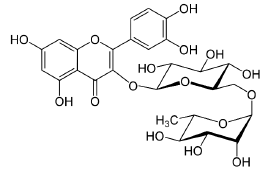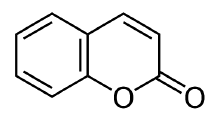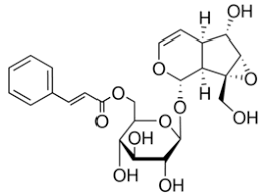Journal of Agricultural Science and Food Research
Open Access
ISSN: 2593-9173
ISSN: 2593-9173
Review Article - (2023)Volume 14, Issue 1
Citrullus lanatus, commonly known as watermelon, is most nutritious fruit belong to Cucurbitaceae family. Being comprises of more than of 92% water, it is considered as a refreshing, thirst-quenching appetizer with significant nutrient balance. Watermelon is edible in various forms, directly in the form of fruit, formulated into beverage, incorporation into deserts. Major portion of watermelon utilized is its fleshy edible portion and least attention is gathered towards its peel. Various studies have reported that the peel of watermelon is rich source of fibers and nutrients and possess ability to be utilized in various food products. The purpose of this review is to highlight the underutilized portion of watermelon with its chemical properties and provide way for future research with it.
Watermelon scientifically known as Citrullus lanatus, a thirst-quenching fruit belongs to the Cucurbitaceae family originated from Kalahari Desert of Africa for more than 4,000 years [1]. And a highly cultivated fruit worldwide, with more than 1,000 varieties. Watermelon can be grown during warm season with plenty of rainfall. For optimum growth, it requires a lot of sunshine and high temperature of over 25°C. Since Citrullus lanatus contain about 93% water, therefore commonly called “water” melon. And the “melon” part defines the fruit to be large and round with sweet, pulpy flesh. The skin is smooth, with dark green rind or every so often light green stripes that become yellowish green when ripe. Watermelon is an exceptionally rich in nutrients, can be served for breakfast, as an appetizer or snack [2]. Watermelon is one of the major under-utilized fruits, the juice or pulp from watermelon is used for human utilization, while rind and seeds are major solid wastes of fruit industries [3-5]. The most important watermelon producing areas are the Middle East, the USA, Africa, India, Japan, and Europe. According to the National Institute of Industrial Research, watermelon is cultivated in Rajasthan, Uttar Pradesh, Orissa, Punjab, Haryana, Assam, West Bengal, Karnataka, Orissa, Gujarat, Andhra Pradesh, Maharashtra, Himachal Pradesh and Tamil Nadu. The common name of watermelon is Tarbooz (Hindi and Urdu), Tarbuj (Manipuri), Kaduvrindavana (Marathi), Eriputccha (Telegu), Kallangadiballi (Kannada), Tormuj (Bengali), Indrak (Gujarati). India grows approximately 25 commercial varieties, a few of which have delightfully interesting names: New Hampshire Midget, Madhuri 64, Black Magic, Sugar Baby, Asahi Yamato, Arka Jyoti, Arka Manik, Improved Shipper, Durgapura Meetha and Durgapura Kesar to name a few. Watermelon is grown in sandy loam soil rich in organic matter with good drainage and pH range for 6.5-7.5 [6]. In North Indian plains, watermelons are sown in February-March whereas in Northeastern and Western India best time of sowing is from November to January. In South and Central India, these can be grown almost round the year.
Watermelon is one of the commonly consumed fruits in many countries. Watermelon contains more than 91% water and up to 7% of carbohydrates. It is a rich source of lycopene and citrulline. Watermelon rind contains more amounts of citrulline then flesh. Additionally, watermelon has a number of essential micronutrients and vitamins. The amino acids citrulline had been first extracted from watermelon and analyzed. The nutritional quality of watermelon shows that it is very rich in vitamins A, different vitamins from vitamin B complex like Thiamine, Riboflavin, Niacin, Pantothenic acid, vitamin B6 and Folate, Vitamin C. The mineral composition is Calcium, Iron, Magnesium, Phosphorus, Potassium and Zinc, it also contains highly unsaturated fatty acids and oils, It also rich in necessary amino acids like arginine, glutamine and aspartic acid [7]. The plant is also rich in alkaloids, flavonoids, glycoside, saponins, tannins and phenols. Its nutritive values are also useful to the human health.

Citrulline

Rutin

Coumarin

Picroside
Watermelon is rich source of antioxidant, lycopene which protects the cell from damage and reduce the risk of heart disease. It is also rich source of minerals which confers heart health, one such is potassium, which forms the component of cell and helps in moderating the blood pressure and keeps heart healthy [8].
As mentioned, watermelons comprise of more than 90% of water, which helps to keep the body hydrated and balance the electrolyte levels in body fluid. It is the best thirst quenching in summer season. Watermelon has significant number of fibers which helps in digestion and regulated bowel movement.
Presence of carotenoids and lycopene in watermelon makes it a rich source of antioxidant. Anti-inflammatory activity of fruit is attributed to the presence of lycopene, and it also acts as antioxidant by neutralizing free radicals. Watermelon also consists of significant amount of Vitamin A which contributes towards antioxidant activity.
Presence pf lycopene makes it as effective anti-cancer agent. As per the report obtained by National Cancer Institute, Lycopene help in reducing prostate cancer cell proliferation.
According to a study (2013) [9]. Development of watermelon incorporated fruit butter, Watermelon rind can be a replacing one to prepare fruit butter. Different fruit butter formulations with the ratios of 100:0, 75:25, 50:50, 25:75 and 0:100 (Apple: watermelon rind) were prepared. The preparation involved cooking of 300gm Sugar with 400gm watermelon rind pulp with some spice mixture (nutmeg, cinnamon and clove) and citric acid. The prepared product undergone organoleptic evaluation and out of 4 ratios, Sample 4 (0:100) was accepted when compared to apple butter. Hence, 100 % watermelon rind can be incorporated for preparation of nutritious and acceptable fruit butter.
On the basis of nutritional and health benefits of watermelon rind, Cookies were prepared by incorporating watermelon rind flour at different levels – 10%, 20% and 30% and compared to 100% refined wheat flour [10]. Processing of Cookies comprises of dry ingredients mixing along with watermelon rind flour and refined wheat flour and kneaded to dough. It is subjected to rolling and cutting followed by baking at 160 °C for 20 minutes. As a result, 30 % watermelon rind incorporated cookies were best accepted on the basis of nine- point hedonic scale with 8.04 score. Therefore, watermelon rind flour can partially alter the refined wheat flour which can be a best novel product and can advance the nutritional quality of crude fiber, calcium, iron and phosphorous of product and also add variety to the diet.
Muhamad et al [11]. Developed technology using osmotic dehydration for Dehydrated Candy from Watermelon rind. The blanching was done on 3 cm long and 1 cm wide pieces of watermelon rind for 1 min followed by dipping it in 40 °C Brix sugar syrup with daily increment of 5 °CBrix up to 55 °C Brix. Crystalized rinds were kept at 50 °C in cabinet drying for 8, 14 and 20 hours respectively and finally coated with icing sugar and corn flour (1:1). Results showed that 14 hours kept dehydrated candies were the most acceptable.
Due to satisfactory level of pectin, watermelon rind can act as a stabilizing agent in preparation of food products [12]. Watermelon rind can be formulated in flour and acts as a stabilizer in the preparation of mayonnaise. Study involves the preparation of 4 treatments, 0% watermelon rind, 2%, 4% and 6% with 50% oil in each treatment. Results of organoleptic evaluation revealed that use of 2% watermelon rind is suitable for mayonnaise preparation [13].
Ogo et al [14] incorporated watermelon rind and orange pomace in the development of wheat enriched Biscuits in the following ratio 100:0:0; 90:5:5; 80:10:10; 70:15:15 and 60:20:20 as an effective value addition to food by improving the nutritional quality of biscuits. The composite flour formulated from wheat flour, watermelon rind and orange pomace flour and dry ingredients mixing were done to form dough. The kneaded dough was subjected to roll out into biscuits of 3cm diameter followed by baking at 160 °C for 20 minutes. The Biscuits was rated well in sensory test.
A study was carried out to utilize the watermelon rind as a functional ingredient in cake processing by substitute the wheat flour with 5, 10 and 15% of watermelon rind powder and 100% of wheat flour. All the ingredients were mixed together and then baked at 180 °C for 30 minutes. After organoleptic evaluation, 5% and 10% formulations were most acceptable. Thus, watermelon rind powder could be used as a functional ingredient due to their nutritional health benefits [15].
This study concludes that the most underutilized portion of watermelon, rind possess good efficiency to be utilized not only in food industry but also in another sector. According to the United Nations Food and Agriculture Organization (FAO), fruits and vegetable processing industry estimated that losses and waste is the highest among all types of foods, and may reach up to 60%. About 25% - 30% of by-products wastes among whole commodity group produces by the processing of fruits and vegetables industry. Out of the total annual production, one third of it is simply discarded in the form of rind and peel. Therefore, this review gathers attention towards more and more utilization of fruits and vegetables.
Citation: Dubey S, Rajput H, Batta K (2021). Utilization of Watermelon Rind (Citrullus lanatus) in Various Food Preparations: A Review. J Agri Sci Food Res 14:141.
Received: 02-Aug-2021, Manuscript No. JBFBP-21-12038; Editor assigned: 05-Aug-2021, Pre QC No. JBFBP-21-12038; Reviewed: 19-Aug-2021, QC No. JBFBP-21-12038; Revised: 24-Mar-2023, Manuscript No. JBFBP-21-12038; Published: 31-Oct-2023 , DOI: 10.35248/2161-1025.23.14.141
Copyright: © 2021 Dubey S. This is an open-access article distributed under the terms of the Creative Commons Attribution License, which permits unrestricted use, distribution, and reproduction in any medium, provided the original author and source are credited.